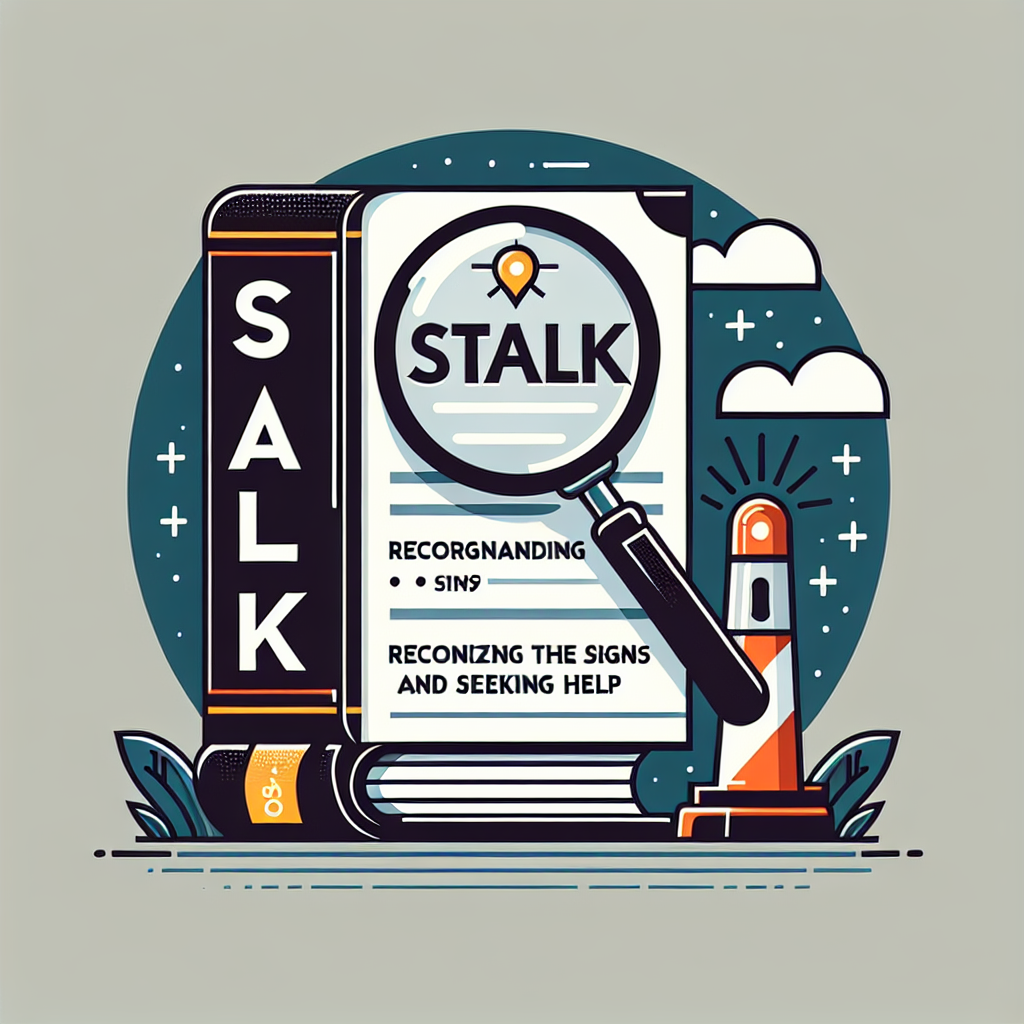
Introduction
Stalking is a serious issue that can leave lasting psychological and emotional scars. Despite its prevalence, many people remain unaware of the signs and implications of stalking, making it critical to help individuals recognize and address the problem effectively. In this comprehensive guide, we aim to empower readers by providing valuable insights into Understanding Stalking: Recognizing the Signs and Seeking Help. Whether you are a victim, a concerned friend, or someone who wants to learn more about this troubling phenomenon, this article will equip you with the knowledge to stay safe and find the help you need.
The Definition of Stalking
Stalking is defined as the repeated, unwanted attention or harassment directed at an individual. It can manifest in various ways, including:
- Excessive texting or calling
- Following someone
- Monitoring social media
- Showing up uninvited at places the victim frequents
Understanding stalking is crucial because it is not merely annoying behavior; it poses serious risks to the victim’s safety and mental health.
The Signs of Stalking
Recognizing the signs of stalking can be the first step towards regaining control and seeking help. Here are some key signs to be aware of:
1. Unwanted Communication
Stalkers often initiate unwanted contact through various channels. This includes texts, emails, and phone calls, even after being asked to stop.
2. Surveillance
If someone seems to know your whereabouts and activities without your informing them, this could be a warning sign.
3. Persistent Following
Whether in-person or online, stalking often involves someone relentlessly following the victim’s movements.
4. Threatening Behavior
Stalkers may make threats—implicit or explicit—that raise alarm bells.
5. Vandalism or Property Damage
Damage to personal property, especially after a relationship has ended, can indicate stalking behavior.
Table 1: Common Signs of Stalking
| Signs of Stalking | Description |
|---|---|
| Unwanted Communication | Excessive messages, calls, or emails |
| Surveillance | Unexplained knowledge about your activities |
| Persistent Following | Being consistently observed in public spaces |
| Threatening Behavior | Verbal or written threats |
| Vandalism/Property Damage | Tampering with possessions or belongings |
Case Study: The Haunting of Sarah
Sarah, a college student, began receiving an overwhelming number of messages on social media from an acquaintance. Despite her attempts to ignore them, the messages escalated into phone calls and constant appearances on campus. Sarah eventually sought help from campus authorities, who helped her take legal action against her stalker. This underscores the importance of recognizing the signs and taking swift action.
The Psychological Impact of Stalking
Experiencing stalking can lead to severe psychological consequences, including:
- Anxiety and depression
- Post-Traumatic Stress Disorder (PTSD)
- Isolation from friends and family
- Fear for personal safety
Understanding the impact is essential to validate the feelings of victims. If you or someone you know is experiencing these symptoms, seeking professional help is crucial.
Case Study: John’s Journey
John was a victim of stalking for over a year. He reported feeling anxious and paranoid, even in safe spaces. After gaining the courage to speak about his experiences in a support group, he found healing and began reclaiming his life. John’s story exemplifies how understanding one’s experience is essential for recovery.
Seeking Help: Options and Resources
When facing stalking, understanding your options can be empowering. Here are some resources and steps to consider:
1. Document Everything
Keep a log of all incidents, including dates, times, and details of the behavior. This will be helpful if you need to seek legal action.
2. Contact Authorities
Do not hesitate to report stalking to local law enforcement. Stalking is a crime, and authorities can provide protection and support.
3. Legal Protections
Consider seeking a restraining order against the stalker. Legal protections can provide security and peace of mind.
4. Support Networks
Engage with friends, family, or support groups. Speaking about your situation can help you feel less isolated.
Resources
| Resource Name | Description |
|---|---|
| National Center for Victims of Crime | Provides information and resources for stalking victims |
| RAINN (Rape, Abuse & Incest National Network) | Offers support and guides for dealing with trauma |
| Local Law Enforcement | Your first line of action for immediate threats |
Conclusion
Understanding stalking is essential for victims and those who care about them. Recognizing the signs is the first step to taking action, seeking help, and regaining control. It empowers you not only to protect yourself but to inspire others to do the same. If you or someone you know is facing stalking, remember: you’re not alone, and help is available.
FAQs
1. What should I do if I realize I am being stalked?
Document the incidents, reach out to law enforcement, and connect with support networks.
2. Can stalking happen online?
Yes, cyberstalking is a prevalent issue that involves unwanted digital communication or surveillance.
3. What resources are available for stalking victims?
Numerous organizations provide support, including the National Center for Victims of Crime and other local resources.
4. Is stalking considered a crime?
Yes, stalking is a criminal offense and can lead to legal consequences for the perpetrator.
5. How can I support a friend who is being stalked?
Listen to them, validate their feelings, and encourage them to seek professional help while ensuring their safety.
By delving deeply into the realities of stalking, this article aims to enhance your understanding, empower you, and encourage meaningful discussions around this important topic. Remember, Understanding Stalking: Recognizing the Signs and Seeking Help is not just about awareness; it’s about fostering a safer, more informed community.

![Cracking the Code: Inside the Latest Homicide Investigation in [City/Region] 5 Homicide Investigation](https://psyforu.com/storage/2025/04/Cracking-the-Code-Inside-the-Latest-Homicide-Investigation-in-CityRegion-150x150.png)




![Cracking the Code: Inside the Latest Homicide Investigation in [City/Region] 10 Homicide Investigation](https://psyforu.com/storage/2025/04/Cracking-the-Code-Inside-the-Latest-Homicide-Investigation-in-CityRegion-768x768.png)






